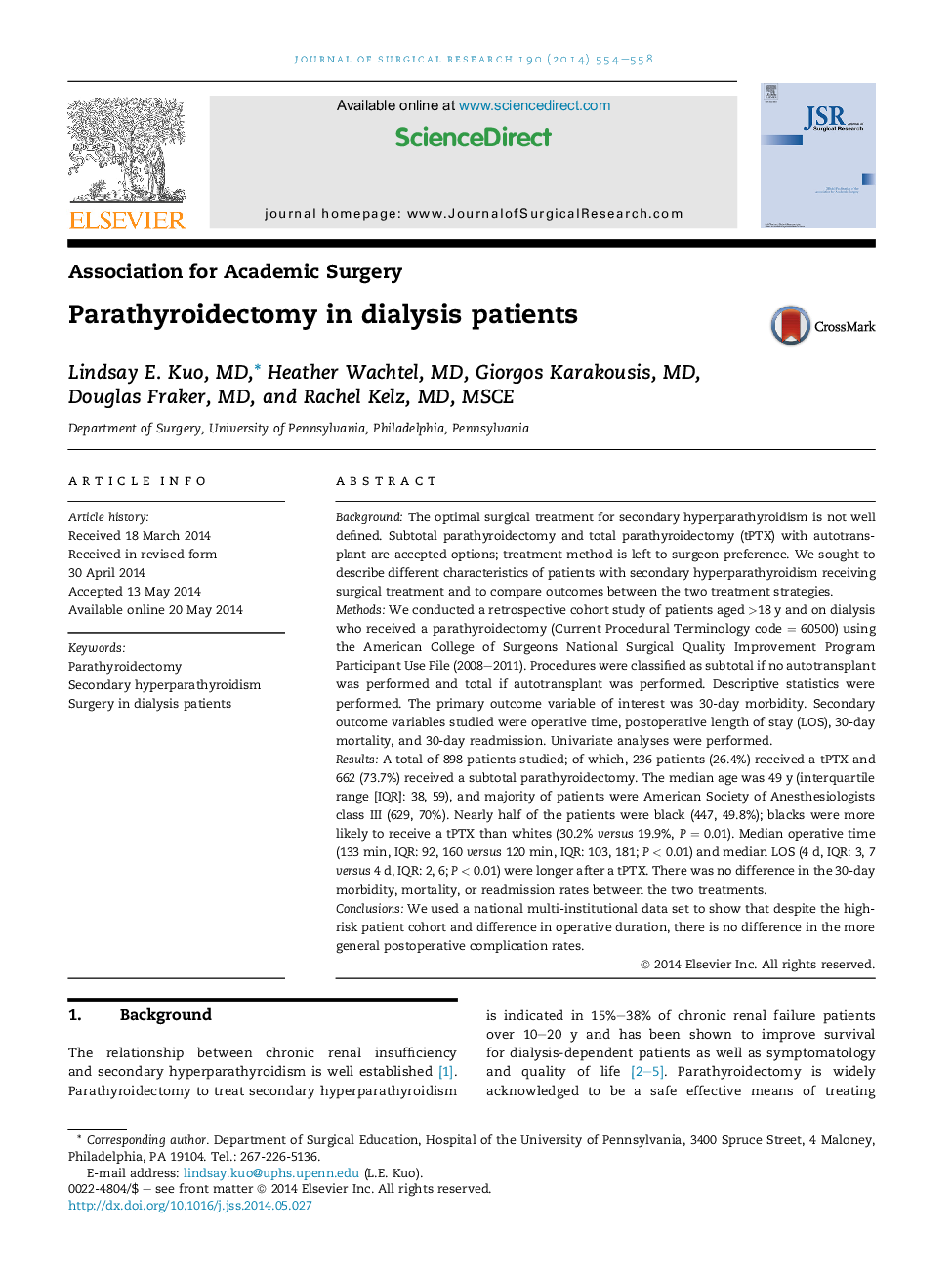| کد مقاله | کد نشریه | سال انتشار | مقاله انگلیسی | نسخه تمام متن |
|---|---|---|---|---|
| 6253922 | 1612527 | 2014 | 5 صفحه PDF | دانلود رایگان |
BackgroundThe optimal surgical treatment for secondary hyperparathyroidism is not well defined. Subtotal parathyroidectomy and total parathyroidectomy (tPTX) with autotransplant are accepted options; treatment method is left to surgeon preference. We sought to describe different characteristics of patients with secondary hyperparathyroidism receiving surgical treatment and to compare outcomes between the two treatment strategies.MethodsWe conducted a retrospective cohort study of patients aged >18 y and on dialysis who received a parathyroidectomy (Current Procedural Terminology code = 60500) using the American College of Surgeons National Surgical Quality Improvement Program Participant Use File (2008-2011). Procedures were classified as subtotal if no autotransplant was performed and total if autotransplant was performed. Descriptive statistics were performed. The primary outcome variable of interest was 30-day morbidity. Secondary outcome variables studied were operative time, postoperative length of stay (LOS), 30-day mortality, and 30-day readmission. Univariate analyses were performed.ResultsA total of 898 patients studied; of which, 236 patients (26.4%) received a tPTX and 662 (73.7%) received a subtotal parathyroidectomy. The median age was 49 y (interquartile range [IQR]: 38, 59), and majority of patients were American Society of Anesthesiologists class III (629, 70%). Nearly half of the patients were black (447, 49.8%); blacks were more likely to receive a tPTX than whites (30.2% versus 19.9%, P = 0.01). Median operative time (133 min, IQR: 92, 160 versus 120 min, IQR: 103, 181; P < 0.01) and median LOS (4 d, IQR: 3, 7 versus 4 d, IQR: 2, 6; P < 0.01) were longer after a tPTX. There was no difference in the 30-day morbidity, mortality, or readmission rates between the two treatments.ConclusionsWe used a national multi-institutional data set to show that despite the high-risk patient cohort and difference in operative duration, there is no difference in the more general postoperative complication rates.
Journal: Journal of Surgical Research - Volume 190, Issue 2, August 2014, Pages 554-558
